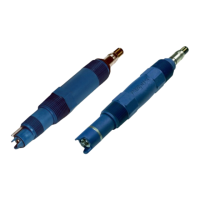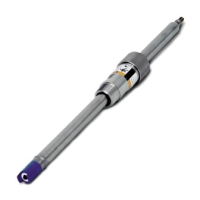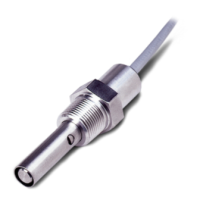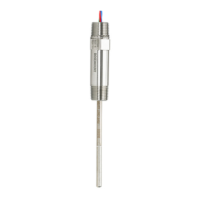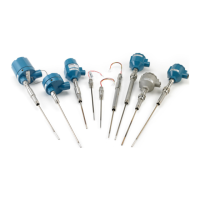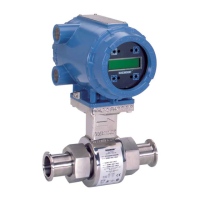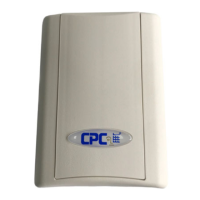46
Reference Manual
00809-0100-4804, Rev CB
Operation and Maintenance
November 2016
Operation and Maintenance
5. Launch the “Upper Sensor Trim” function using AMS Device Manager or a Field Communicator.
6. Physically apply the desired high-pressure value to the P
HI
/P
LO
sensor using a reference pressure
device such as a high-accuracy dead-weight tester.
7. Wait for the P
HI
/P
LO
pressure measurement to stabilize.
8. When prompted by AMS Device Manager or the Field Communicator, define the amount of pressure
that was applied to the P
HI
/P
LO
sensor.
4.3.3 DP calibration
The DP calibration function can be used to adjust the calculated DP measurement of the ERS System. For
example, a DP zero trim can be performed if the calculated DP of the Rosemount 3051S ERS System has
a small offset when the expected output should be “0 DP.”
Note
Because the DP calculation is dependent on the P
HI
and P
LO
pressure measurements, all DP calibration
functions should be performed after completing the calibration functions on the individual P
HI
and P
LO
sensors.
Zero trim for PHI and PLO eliminates the DP offset. Performing a zero DP trim will establish a new DP zero
point (and eliminate any residual DP zero trims). A zero DP trim should be performed after installing and
calibrating the individual pressure sensors and before subjecting the ERS System to the actual process
conditions in order to establish a zero-based DP measurement.
DP zero trim
The DP zero trim function establishes a true zero-based DP calculation by taking the current
measurement output and forcing that value as the new zero-reference. A DP zero trim should only be
performed when the expected output of the ERS System is “0 DP.” For non-zero based trims, a DP Lower
Trim should be performed instead.
The DP zero trim function requires both pressure sensors to be wired and connected.
To perform a DP zero trim, follow the procedure below:
1. Ensure that the individual P
HI
and P
LO
pressure sensors have been calibrated as detailed on page 45
and are wired together as shown in Figure 2-10, Figure 2-11, or Figure 2-12.
2. Launch the “DP Zero Trim” function using AMS Device Manager or a Field Communicator.
3. Apply “0 DP” to the ERS System and wait for the DP measurement to stabilize.
4. Using AMS Device Manager or a Field Communicator, perform the zero trim function on the ERS
System.
Upper and lower DP trims
The DP calculation can be trimmed using a two-point calibration where lower and upper end-point
pressures are applied, and all readings are linearized between the two points.
Unlike the DP zero trim function, the upper and lower DP trims can be performed when the ERS System
is pressurized under actual process conditions.
Always perform a lower DP trim first to establish the correct offset. The upper DP trim provides a slope
correction.
Fast Keys
3, 4, 2, 1
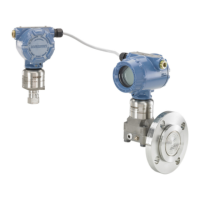
